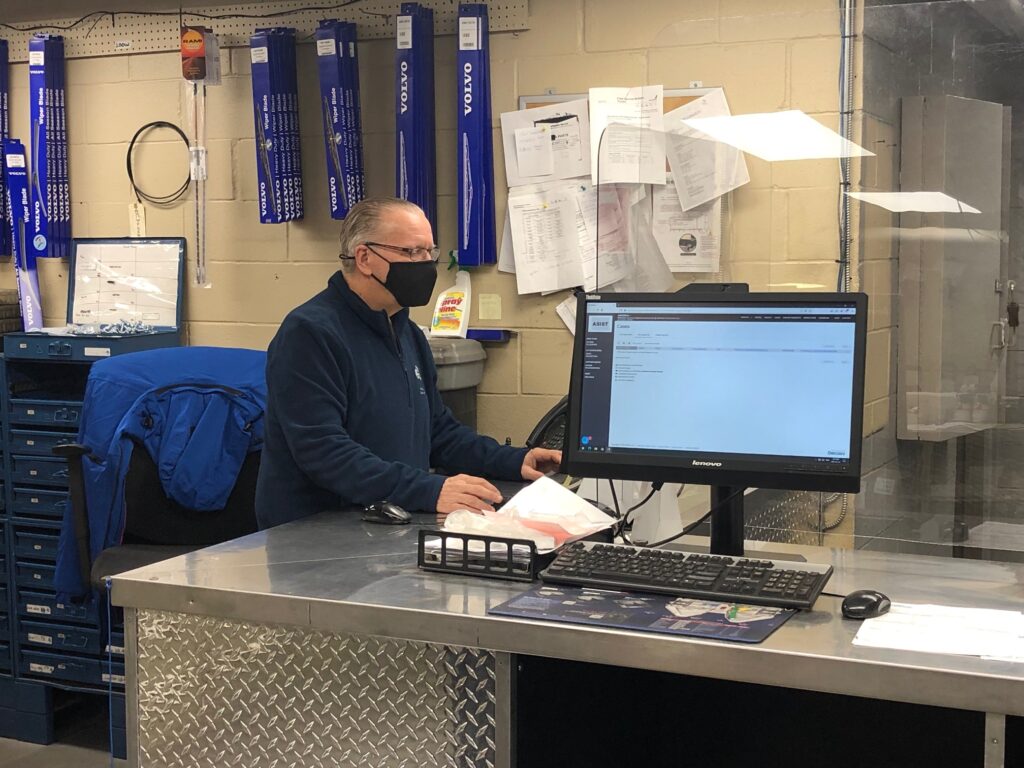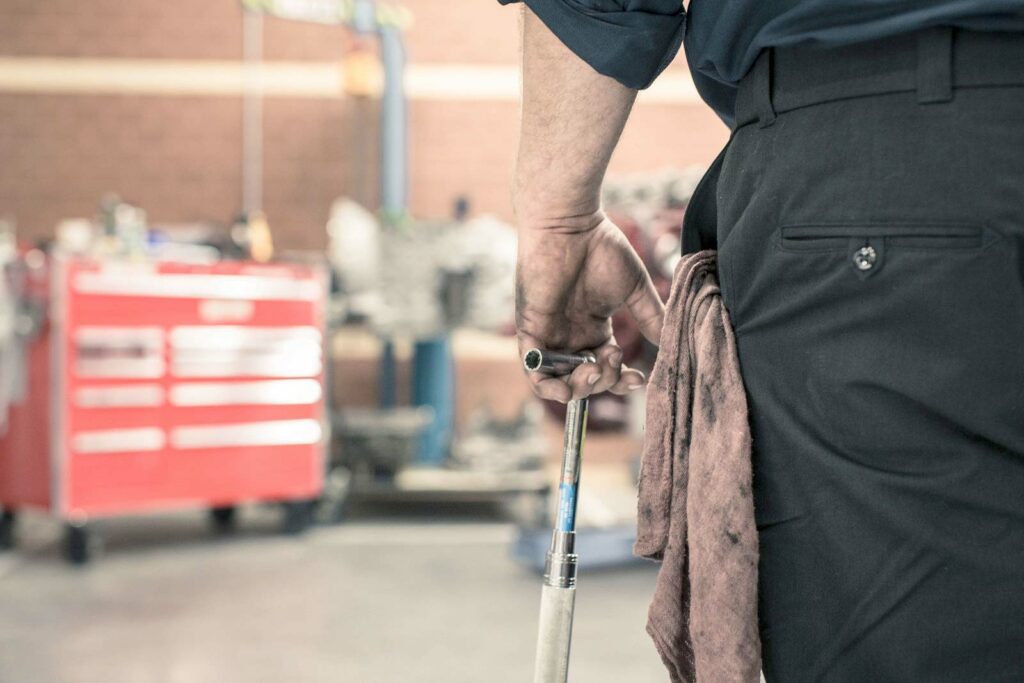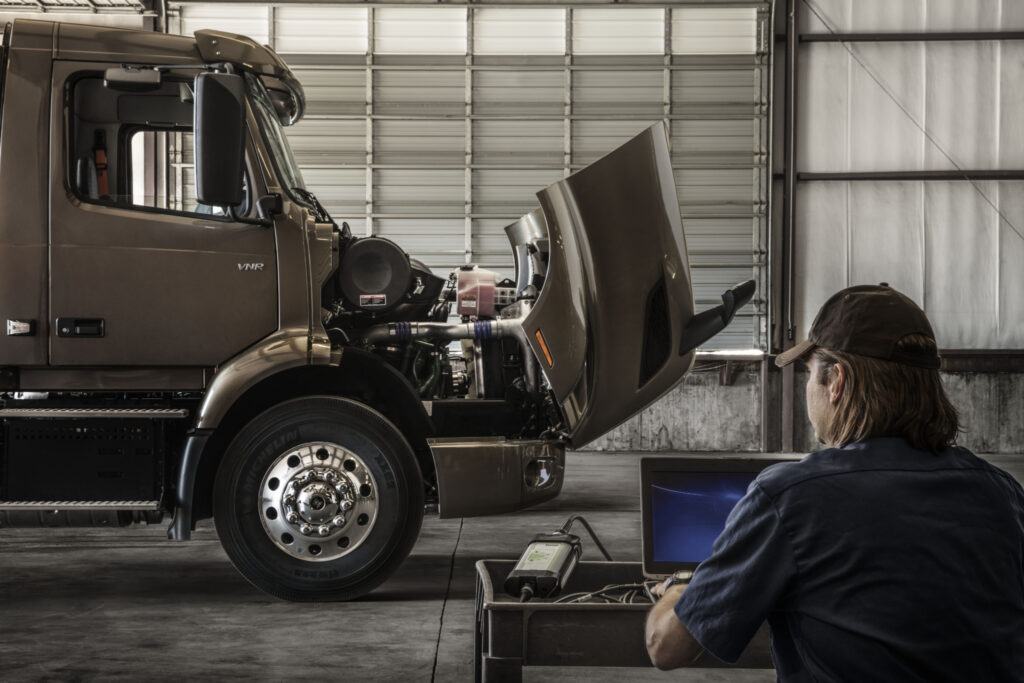Triage programs, organized tasks keep trucks rolling through the bays
Time is money in every shop, and that means taking every possible step to enhance efficiencies. Understanding the repairs to be completed, and even having the right tools on hand, are only part of the process.
Today, the goal is to strip away every possible delay, and pay attention to the details that will ultimately ensure quicker repairs.
The increasing use of “triage technicians” to quickly diagnose problems offers an example of that.
By sorting trucks based on the severity of the problem, shops are able to prioritize work, and put vehicles needing only minor repairs back on the road more quickly. Sheehan’s Truck Centre of Burlington, Ont., a member of the Volvo Certified Uptime Center network, is one of the dealers offering such service in Ontario.

“We’ve been a member of the network since 2018, and the designation makes you a bit more efficient,” said service manager Rick Hurst.
The Volvo program was launched in 2016. To qualify for enrolment, a dealer must be fully proficient in 28 key categories related to efficient service and repair.
Sheehan’s has a dedicated triage technician on each shift, and at times, use others as a backup when the workload increases, he said. It also has a dedicated triage drive-thru bay.
“The idea is to help customers plan around breakdowns,” Hurst said.
The center is focused on improving the efficiency of its technicians, and reducing the length of a customer’s visit. To achieve that, the company has implemented a program under which parts are delivered to the technicians in the bays by other staff, so that work proceeds uninterrupted.
“This keeps the tech at the truck working, instead of standing at a parts counter.”
Daimler Trucks North America also offers an express assessment and repair program through its Freightliner Elite Support network.
“We put an emphasis on customer communication and throughput, meaning getting all repairs done with a focus on trying to minimize customer downtime.” said Manny Sidhu, vice-president of operations at New West Truck Centres, a major Freightliner dealer in Alberta.
“All repairs are triaged to understand the extent of repair required, and communicated back to the customer so that they can make a business decision as quickly as possible.”

All four of the company’s locations are Elite-certified, Sidhu said.
“Fifty per cent of our bays are allocated for triage or express repair, and 70% of all repair orders are completed within 24 hours of customer arrival,” he said.
Every dealership earning the Elite Support certification must meet 129 specific criteria across 20 customer service areas, according to DTNA. And Sidhu said New West Truck Centres ranks among the Top 10 dealers in North America in the DTNA network in terms of customer turnaround.
In the fleet shop
The focus on efficiency is not limited to triage strategies – or even to the dealership level.
Fleets such as Challenger Motor Freight and Day & Ross are also investing heavily in people and tools to make repairing trucks as efficient as possible. As with dealers, the emphasis is on saving time by making it easier and safer for technicians to work.
Challenger runs shops that match its image, but they weren’t set up overnight.
“Large fleet repair shops are an exercise in continual learning. Every time you feel you have your maintenance program really dialed in, another opportunity shows itself and the process of evaluation and determining solutions begins again,” said maintenance director Adam Wolk.
“There are always opportunities for improvement.”
Defined maintenance systems ensure work is performed completely, correctly, and according to the priorities of internal fleet customers, he said. And Walk’s ideal shop is clean, well-lit and organized.
Safety is paramount, too.
It is important to make sure that technicians and all other maintenance staff go home each day the same way they came in – safely, he said.
Jude Michael St. Cyr, chief mechanic at Day & Ross’s facility in Mississauga, Ont., agrees.
“An ideal shop would provide a safe working environment for all staff, well-kept with adequate lighting. We have invested in our people by providing what is necessary to work safely and effectively,” he said.
Steps to improve technician comfort make a difference in their own right. Wolk offers in-floor heating as an example.
“Nothing drains your energy faster than working on a cold floor in the winter time.”
The added benefit of a heated floor is that it reduces dust in the shop. No fans are needed.

Keeping parts on-hand
Still, all of these efforts will fail if the shop doesn’t have easy access to parts.
At Challenger, Wolk and his staff keep an eye on stock levels, perform cycle counts regularly, and closely manage aging inventory and obsolete parts.
“We are always looking to procure our repair and maintenance parts at the best value, but not sacrificing quality,” said Wolk.
“We made a change a while back to buy more expensive brake shoes, after an analysis showed that the shoes we were buying previously had too high a failure rate,” he added.
Day & Ross employs a full-time parts person who keeps the shop well-stocked, said St. Cyr.
The carrier manages its inventory primarily by performing daily, weekly and spot counts as well.
“Additionally, we perform a full inventory count on a semi-annual basis,” he added.
It’s all about ensuring the right parts and tools are ready for the job, and that the processes and procedures are in place to put them to work as efficiently as possible.
Have your say
This is a moderated forum. Comments will no longer be published unless they are accompanied by a first and last name and a verifiable email address. (Today's Trucking will not publish or share the email address.) Profane language and content deemed to be libelous, racist, or threatening in nature will not be published under any circumstances.